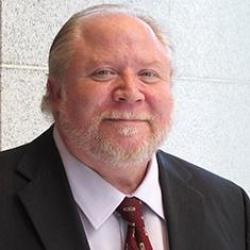Journalists, the public don’t agree on the facts of news — but they could
This blog post is the first of a follow-up series on the News Co/Lab’s community news awareness surveys.
Some 25 years ago, I was the managing editor of a small team that created the content for the original Newseum. We sampled news of nearly every flavor. The best of it invited definition. So I tried this one: Good journalism is the fair, accurate, contextual search for truth.
When the Cronkite School teamed up this year with Moody College to survey thousands of people in three communities about news, we tested that definition.
Did the public and journalists agree on how well local newspapers embodied the basic elements of news?
No, they did not agree. Not even close. Chasm would be too kind a word. Yet in the end, as you’ll see, there’s still hope.
Here’s how the fair, accurate, contextual search for truth is doing through the lens of an online survey in three communities.
Fair: Asked if their newsroom “is fair in its reporting,” 94.3 percent of local newspaper journalists agreed or strongly agreed. But just 17.8 percent of the public agreed or strongly agreed. In other words, more than 9 in 10 local newspaper journalists say they are fair, but fewer than 2 in 10 community survey takers agreed.
Accurate: A whopping 98.9 percent of the newspaper journalists agreed or strongly agreed that their newsroom “cares about getting the facts right.” Journalists don’t agree on a lot, but they agree on this. But again, just 22.8 percent of the public survey respondents agreed.
Contextual: Things did not get better when we asked whether the newspapers provide “all the information needed to fully understand the news.” Most journalists (76.1 percent) agreed or strongly agreed. But only 12.7 percent of the public agreed. Perhaps this crisis of context isn’t surprising, given all the newsroom cuts in recent years.
Search for truth: The survey asked journalists and people to rate the news outlets on a series of adjectives. Again, a consistent 96.6 percent of the newspaper journalists agreed or strongly agreed their newsrooms were both “credible” and “trustworthy.” The public did not share that sentiment. Again, only 22.2 percent of the public could agree or strongly agree the local newspaper was “credible” and just 19.4 percent said it was “trustworthy.”
I had seen this type of newsroom-community gap before. Years earlier, at an annual conference of the Investigative Reporters and Editors, I asked a lunch crowd a few questions. How many of you believe investigative reporting is worth more to society than it costs? A thousand hands went up. How many believe the average American understands the true value of investigative reporting? One hand went up. How many believe it is your responsibility to explain the value of investigative reporting to society? Most said no — maybe only a third said yes.
Most said no. When you think about it, the answer makes almost no sense at all. Do news people really expect people to believe, as a leap of faith, that good journalists are on a fair, accurate, contextual search for truth? Without being shown what they are doing? Without being asked to help? If people knew more about how news worked, would they have a higher opinion about the journalists who do it well?
That answer appears is yes. A glimmer of hope in our community surveys came from the responses of news sources — public officials, community leaders and other newsmakers who are interviewed for stories. They see more of the good and bad sides of local journalism. They know more about how news works.
And they think more highly of local journalism than the community at large.
Most of the local news sources, the folks who better understand news, found their local newspaper fair, accurate, credible and trustworthy.
Our argument at the News Co/Lab is that a newsroom can kick start a conversation about how to improve local journalism by experimenting with new forms of transparency and community engagement. We think journalists who explain how and why they do what they do, and engage their community in all aspects of the journalism process, can improve their journalism and their community’s understanding about how news works.
The survey showed that the newsrooms themselves saw room for improvement in transparency and engagement practices.
Journalists and the public both give below average marks when asked specifically if their local newsroom “explains how and why it decides what stories to cover.” Journalists actually gave themselves lower marks than their communities on whether it tells “who its journalists are and what they do.”
Similar alignment came when we asked if the local news organization “invites the community to suggest story ideas or help with reporting.” Journalists, news sources and the public all hovered around a bland rating.
I said there’s still hope. And here it is: A big majority, 69.4 percent of journalists, either agreed or strongly agreed that it was “part of my job is to help people understand how the news works.” An even bigger majority, 75.3 percent either agreed or strongly agreed that “part of [my local newsroom’s] mission is to help people understand how the news works.”
Talking about news starts with helping people better understand it, but doesn’t end there. An increasingly news-fluent community is less vulnerable to misinformation — and can better express what it wants and needs from good journalism. In this interactive digital age of communication, that may be the most important media conversation of all.

Eric Newton is a global leader in the digital transformation of news and a key figure in the creation of news literacy. As the Innovation Chief, he drives change and experimentation at Cronkite News, the news division for Arizona PBS.
